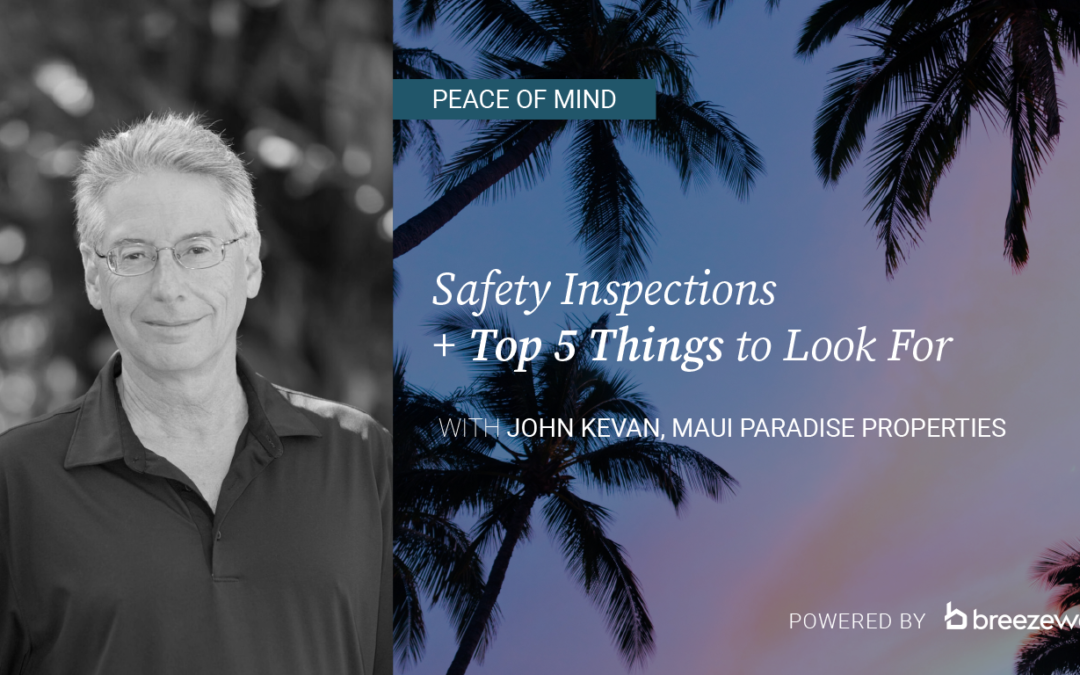The challenge: A look at short-term rental safety through a new lens
When outfitting a vacation home or other short-term rental, it can be easy to inadvertently overlook necessary safety practices when inspecting the home with the eye of an owner occupant instead of the eyes of the various types of guests the home will host.
For John Kevan, this challenge hit home when he was on a family vacation and his 3-year-old grandson ran into a bookcase that had a 50-pound vase on top of it. The top-heavy bookcase swayed and almost fell on top of the toddler.
“When you’re living in your own home, you don’t think about things like this because that’s your home; you do what you want to do,” he said. But for short-term rental owners and managers, we have to set up and inspect our properties differently.
John is the managing partner of Maui Paradise Properties (MPP), a real estate and property management company that manages about 300 vacation rentals at 80 resorts on the island of Maui and employs about 24 people.
The solution: Breezeway’s Short-Term Rental Safety Inspection Course
A strong advocate for safety, John investigated different options for a new safety program he could implement at MPP and ultimately selected Breezeway’s Short-Term Rental Safety Inspector course. Breezeway launched the inspector program in early 2020 with vacation rental safety expert Justin Ford. MPP was already using Breezeway’s property operations platform, and John met Justin at a trade show presentation on safety.
The program trains and empowers property managers to identify and eliminate safety risks in vacation and short-term rental homes. John worked with Justin through Zoom to train and certify his team of nine service managers as Short-term Rental Inspectors.
The biggest takeaway from the training, John said, was the importance of inspecting for safety just as thoroughly as inspectors check for cleanliness, working amenities, and other guest expectations. To make this process easy, John’s team uses a safety checklist during each inspection together with the Breezeway app to store and organize property details, including photos of the property, recurring safety inspections, timestamps, and owner to-do lists.
MPP now requires an annual safety inspection at each of the 300 properties that the company manages. After each inspection, the homeowner receives a report with any safety concerns at their property and measures they can take to address them.
The result: safer stays and peace of mind
MPP’s service managers have gained greater awareness of potential dangers in seemingly innocuous household items. The training has helped property managers to look at a vacation or short-term rental property from the perspective of a guest stepping into unknown territory. Something as simple as uneven flooring, for instance, could present a tripping hazard to a guest who arrives late at night or isn’t paying attention.
“The things that they found the most were items associated with flooring where there were different levels of tiles or carpets where somebody could trip,” John said.
They look for safety issues not only during the annual inspection but whenever they enter a property. Homeowners have reacted favorably to the new inspections and see the protocols as an expected service, so everyone involved in the care of a rental property has greater peace of mind.
John’s top short-term rental safety tips
Property managers can’t guarantee safety, John said, but they can significantly reduce the risk of accidents with proper training, easy-to-follow protocols, and checklists and establishing a schedule for recurring safety inspections. Safety involves looking at a property through the eyes of a guest who is new to the property, such as an elderly person with sight deficiencies to a small child without awareness of what could cause them harm.
His top five things every short-term rental operator should pause and look for today:
- Tripping hazards, such as electrical cords, wires, or uneven flooring
- Chemicals stored under the kitchen sink that a small child could access
- Missing GFCI circuit breakers on outlets located near water sources such as kitchen and bathroom sinks
- Tall, heavy furniture that is not secured in place
- No fire extinguisher



